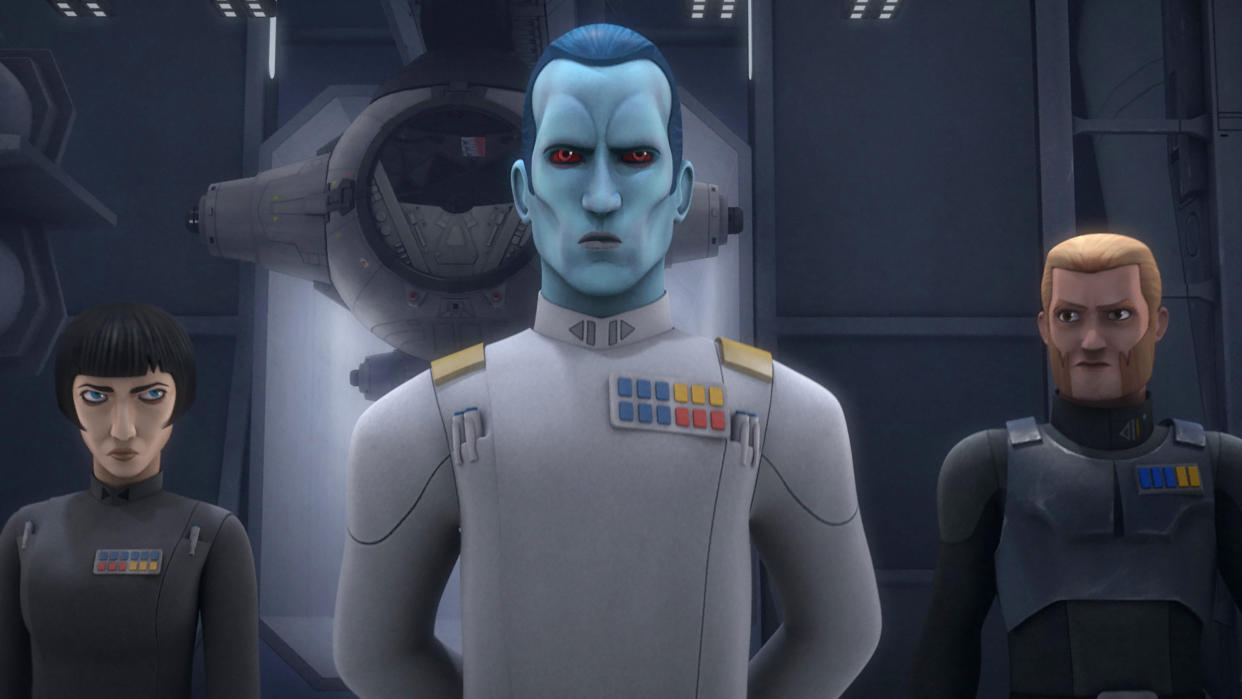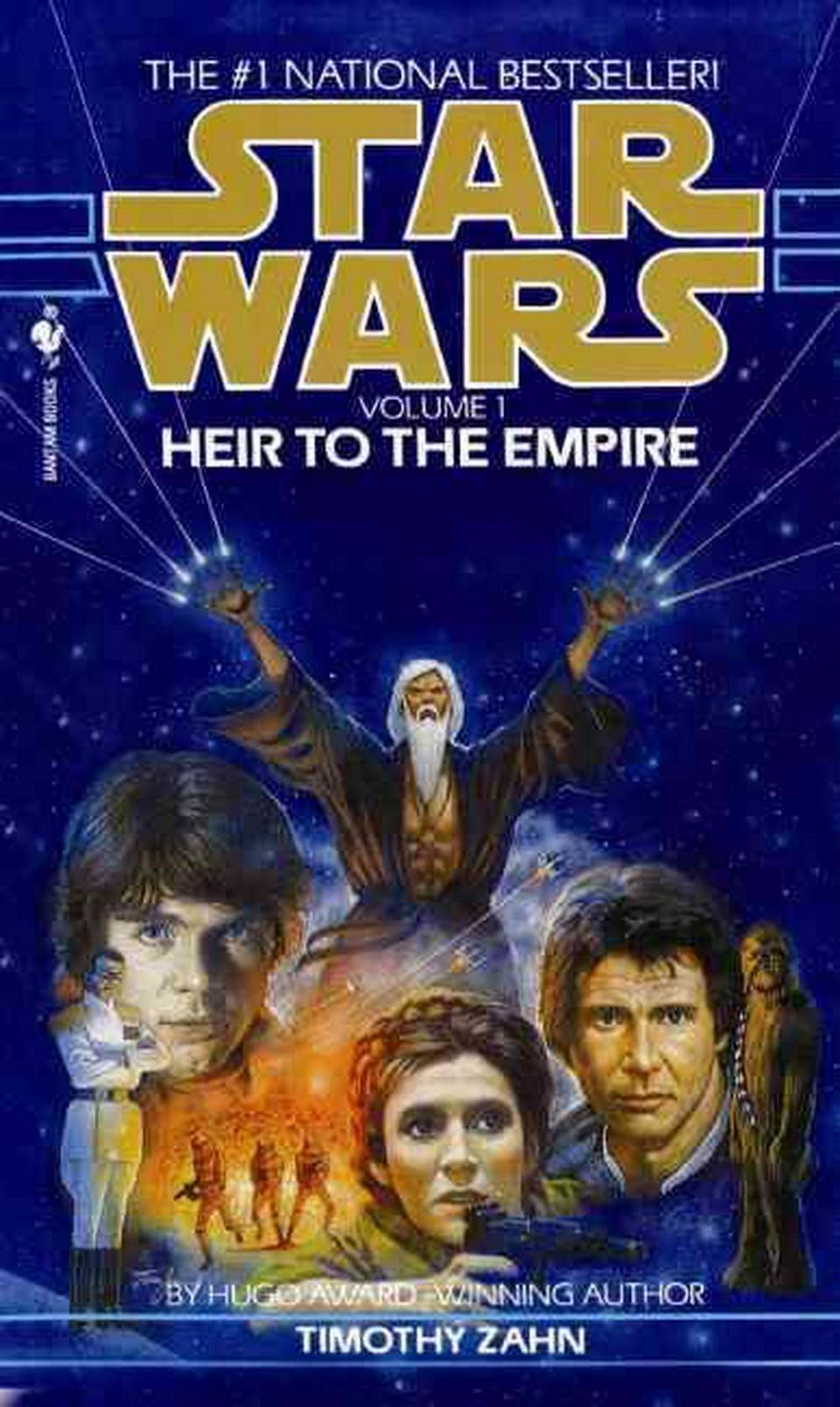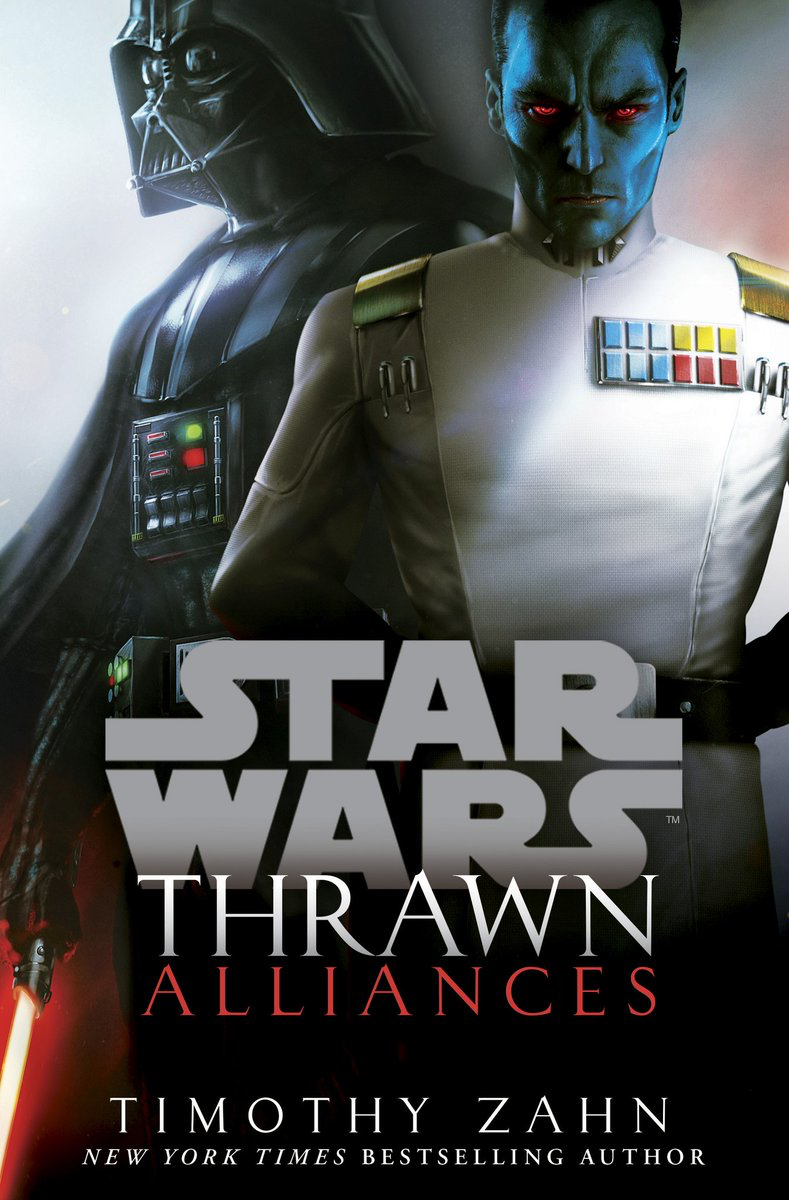'Star Wars' writer reveals original vision for the sequels and his thoughts on 'The Last Jedi'

We’re in an era of nonstop Star Wars. With four films in as many years, two animated series, a live-action TV series on the horizon, monthly comics, a stream of novels, and an avalanche of action figures and games, it might seem impossible for some to remember a time when Star Wars just didn’t matter. Those were the Dark Times, also known as “the mid-’80s.”
While books like 1978’s Splinter of the Mind’s Eye, by Alan Dean Foster, and The Han Solo Adventures, by Brian Daley, had previously given fans hints of a larger universe, after Return of the Jedi left theaters in 1983, Star Wars quickly became relegated to something like a cult status. The fans were there, but the series gradually fell away from the mainstream.
L. Neil Smith’s The Lando Calrissian Adventures was released and forgotten in 1983. The less-than-Forceful TV movies Caravan of Courage: An Ewok Adventure and Ewoks: The Battle for Endor, as well as the Ewoks and Droids animated series, were met with a lukewarm reception. In 1987, West End Games released the well-received Star Wars: The Roleplaying Game, but by then RPGs were a niche industry. Star Wars quickly became marginalized, seen as kids’ stuff. For a generation, the Star Wars story that began in A New Hope ended with Return of the Jedi.

That all changed with the release of Timothy Zahn’s 1991 novel Heir to the Empire. The first of what would later become known as the Thrawn Trilogy, the series picked up the adventures of Luke, Han, and Leia five years after the events of Return of the Jedi and specifically centered on their fight against Grand Admiral Thrawn.
As conceived by Zahn, the blue-skinned, red-eyed Thrawn was a genius tactician whose strategy was to study a planet’s art and culture to orchestrate his victories. A Chiss from the Unknown Regions of the galaxy, he was a rare alien that had joined the Imperial military during Emperor Palpatine’s reign. Allied with mad Jedi clone Joruus C’baoth, Thrawn led the Imperial Remnant, a force determined to reinstate the Empire. He used his ingenuity as well as a clone army — including a cloned Luke — to bring our heroes to the brink of defeat.
For many, the novels are considered to be the best Star Wars stories of all time. And, for over two decades, it was the closest fans would get to direct sequels to George Lucas’s original trilogy.
While J.J. Abrams and Rian Johnson have chosen to diverge from George Lucas’s plan for the post-Jedi era, back in the early ’90s, Zahn didn’t have to worry about matching Lucas’s vision because, as the author tells Yahoo Entertainment, the Star Wars creator didn’t have a plan.
“[Lucasfilm] said, ‘OK, you’re going to do these three novels — what do you want to do?’ And I got to tell them where I thought the story would go. They did some tweaking, but they did not have any map of any sort beyond Return of the Jedi. So, it was a very clean canvas. They didn’t even have any scaffolding, as it were,” Zahn explains. “I built the scaffolding.”
Zahn was effectively given carte blanche to tell his story. The only real guidance Lucasfilm provided him was the roleplaying games.
“They’d sent me a stack of West End game stuff, so I had all of their background to work with, too, so I didn’t have to keep reinventing the wheel,” Zahn says. “A lot of stuff, ground vehicles, aliens, that sort of thing, West End had already done for the RPG, so I got to incorporate all of that.”
The only notable changes Zahn was asked to make were turning an evil clone of Obi Wan Kenobi into the aforementioned Joruus C’baoth and changing the species of Vader’s alien assassins from “Sith” to the “Noghri.”
The Thrawn trilogy was an instant success, with Heir to the Empire hitting No. 1 on the New York Times bestseller list. Zahn’s books also opened the door to what became known as the Expanded Universe, a seemingly unending collection of books, comics, and video games that explored every corner of the Star Wars galaxy. Among Zahn’s most notable contributions to the EU were the “Emperor’s Hand,” Mara Jade, the woman who would eventually marry Luke Skywalker, as well as Han and Leia’s twin children, Jacen and Jaina. All three characters would play major roles in the Expanded Universe.
While Lucas himself never considered the Expanded Universe canon, the EU was embraced by Star Wars fans eager for more stories from a galaxy far, far away. It proved so popular that Lucasfilm eventually needed to create six different levels of canonicity to distinguish between the various films, TV series, and licensed media. Zahn himself went on to write eight more novels in the Expanded Universe. And for as expansive, and occasionally weird, as the stories that populated the EU became, none matched the standard set by Zahn’s original trilogy. In 2014, Disney’s purchase of Lucasfilm wiped the slate clean, designating only the films and Clone Wars TV series as canon, and launching a new series of canonical works, including the animated Star Wars: Rebels and books like Chuck Wendig’s Aftermath trilogy. That meant all the novels of the Expanded Universe, including Zahn’s Thrawn trilogy, were now explicitly non-canon “Legends.”
“The biggest problem I think with the Expanded Universe was it got so big and so complex,” Zahn say. “It was hard, not only hard to keep track of everything, but hard to find someplace where you could put a story and hard to find something that hadn’t been done before.”
Even with the EU wiped out of official existence, much of the “scaffolding” that Zahn built 30 years ago still remains in place. For example, Coruscant — the city-covered planet that featured heavily in the prequels and was home to the Senate — was named by Zahn. Additionally, the government that grew out of the Rebellion, the New Republic, originated in Zahn’s novels. Even the Empire-inspired First Order echoes the Imperial Remnant that Zahn created in Heir to the Empire. Indeed, The Force Awakens depicts the First Order achieving what the Imperial Remnant never did: destroying the New Republic.
“I don’t want to say that they were deliberately thinking about me when they did this, because a lot of the stuff they’re doing is just logic,” Zahn says of the many parallels between his stories and the new Star Wars canon. “If we chase some of the Empire out into the Unknown Regions, the logical thing is for them to build up and then come back. It’s not necessarily inspired; it’s very easy parallel development as well. But it’s still kind of fun to watch Attack of the Clones, when you first see force lightning being caught on a lightsaber blade. I did that. That one’s definitely mine.”
While Zahn’s fingerprints are all over the new canon, his most indelible mark on the galaxy remains Thrawn. In 2016, Lucasfilm officially canonized Thrawn, making him one of the primary antagonists in Rebels. Zahn quickly followed the character’s animated appearance with the release of Thrawn, a new novel detailing the Chiss’s arrival into the Empire. On July 24, Del Rey published Zahn’s much-anticipated sequel, Thrawn: Alliances. Taking place in both the Clone Wars era and a few years before A New Hope, the novel features Thrawn forming uneasy partnerships with classic characters like Padmé, Anakin Skywalker, and Darth Vader.

“The idea was to come up with two stories that would be linked over those 18 years,” Zahn explains. “This is the Anakin who’s been through pretty much all the Clone Wars at this point. He’s hardened. He’s starting to drift a little towards the edge of ‘ends justify the means,’ which is a very Sith thing. So, he’s the harder, more suspicious, less idealistic Anakin.”
Part of Zahn’s motivation to write that version of Anakin was to more effectively set up his looming downfall in Revenge of the Sith, the last of Lucas’s controversial prequel trilogy. “Anakin, I think, falls too quickly under Palpatine’s spell,” Zahn says of the character portrayal in Revenge of the Sith. “There are hints of it, but I think you need more. I did like what they did in Clone Wars, where we got to expand a lot more on Anakin’s growth, his work through the Clone Wars, his relationships with Obi-Wan and other Jedi and such, and you get more of the transitional Anakin than we got in the prequel versions.”
Zahn’s approach to Vader was inspired by Lucasfilm’s Story Group, the folks who keep track of the canonical Star Wars universe. “They told me that [Vader] considers Anakin a different person, and so I came up with the idea of anytime he’s referencing one of those old memories, it’s the Jedi’s memories … which also adds a nice little touch to Return of the Jedi.” Zahn also relished the chance to bridge Vader’s cinematic arc, showing the transition from the force of nature we see in Rogue One and A New Hope to his more sympathetic persona in Return of the Jedi.
“[He’s still a] force of nature. But he still has Anakin’s abilities. He’s smart, he can be tactical, a good starfighter pilot. And he’s a force of nature, but in his interactions with Thrawn, he has to remember that, ‘OK, this guy may be irritating me, this guy may be asking for more slack than I want to give him, but my master still has use for him. This is not a, “I can just choke him because he’s failed me for the last time.” I have to be a little bit more patient.’ So, we’re having not necessarily a patient Vader, but one who has constraints.”
Thrawn: Alliances also gives Zahn a chance to explore Padmé, a character he felt was ill-served by the prequels, by having her join Thrawn and Anakin on their mission, searching for her friend and former handmaiden Duja on the planet Batuu. “Padmé [was] not fleshed out as well as she could. There’s a deleted scene from Attack of the Clones with her family … [where] it struck me that she’s as neurotic as Anakin. This is why they were drawn to each other. I wish that scene had been left in because that does help explain all of that.”

Now fully entrenched in the new canon, Zahn has been able to look at how others continue to use his scaffolding in the about-to-conclude trilogy that began with The Force Awakens. As with prequels, he feels there is some room for improvement. “My philosophy before the sequels came out was that Star Wars was not the kind of thing where you killed off major characters,” the author says. “My logic on that one being if that was, we kill off major characters, either Wedge or Lando would not have survived the second Death Star [in Return of the Jedi]. It always seemed to me, this is the type where the heroes get into danger and you have to, they have to figure out a way out of it that you’ll be happy at the end.
“My vision always for the sequels would be, you would pick up with the children of our main characters,” Zahn continues. “[The original cast] would be the elder statesman type and not necessarily die on camera. They’d be off doing beekeeping like Sherlock Holmes allegedly did. You don’t have to kill off a character to get them offstage.”
Another area where the new Star Wars canon borrows from Zahn’s scaffolding is the idea of Han and Leia’s son turning to the Dark Side. In the films, of course, Ben Solo (played by Adam Driver) turns his back on his family and his Jedi training to become Kylo Ren, the enforcer of the First Order. The Expanded Universe had Jacen Solo become the Sith lord Darth Caedus, killing his aunt Mara Jade before he was killed by his sister Jaina. Zahn, who created Jacen, Jaina, and Mara, says that Jacen’s fall was not necessarily where he would have taken the character. Likewise, he feels that Kylo Ren is too erratic. “Now that may be what you want, but my thought on watching it was, his buttons are so easily pushed, Thrawn would have this guy for breakfast. Somebody who’s competent reading could manipulate him all over the place.”
However, Zahn does like it that Kylo wasted no time trying to kill Luke Skywalker in The Last Jedi. “I very much appreciated the fact that we didn’t have conversation, ‘Shoot everything at him.’ Finally, a villain who doesn’t monologue and just opens fire.”
Watch: Ahsoka actress Ashley Eckstein on #CloneWarsSaved:
Read more from Yahoo Entertainment:

